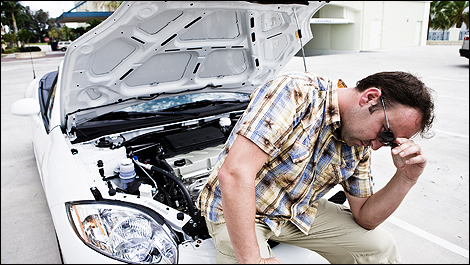Jul
8th
Stay connected Subscribe to our RSS feed
Besides being asked what car one should buy next, I'm also often asked which cars are the worst. Or which cars should be avoided? Which are the bad ones? The lemons, the bad seeds? In all honesty, there are no bad cars out there anymore.
Sure, circumstances would prove me wrong; first batch glitches, quality control problems, etc. However, when it comes down to labelling a car as downright horrible and bad, it just doesn't happen anymore.
How is that? Well, safety regulations and standards across the board have ensured all vehicles are made with a certain level of quality and with materials that make them all more than tolerable. Gone are the days when headrests and even seatbelts were a luxury. Cars by fault of build materials and standards nowadays “feel” more luxurious.
So, how what's the point in doing what I do? Reviewing cars, “testing” them as it were; why do I do that if they're all good anyways? Well, they may all be standardized but they still have their foibles and they still have their strong and weak points, their good and bad sides.
Here's the thing: There's a car out there for everyone, but not everyone will like the same car.
Just as I may like a certain model of house and the design elements it has, you may think it's the ugliest thing on the block. Sure it has doors, windows, plugs and a roof; but we'll each feel differently about it. We'll each find good and bad things about it and perhaps they won't be the same things.
That's where we testers come in. We're here to point out things you may not have considered or even thought about. We're here to look at vehicles from another point of view, and offer up not only an unbiased opinion, but one based on experience after driving hundreds (if not thousands) of vehicles. Standardized is one thing, finding those differences is quite another.
Forget manufacturer stereotypes you've heard over the years. Audis no longer catch fire (and neither do Kias). Hyundais are not made of plastic and VWs don't leave the dealer lot with their check-engine lights on already.
“Bad car” is a dirty term these days because it's not true. There are bad designs, bad colours, bad driver positions, bad cargo space, and even bad entertainment systems (we all know about those *cough*iDrive*cough*), but a bad car as a whole? Nope. Doesn't happen anymore.
Take solace in knowing that if you are in the market for a new vehicle, you're bound to get a good car. However, the tricky part comes down to choosing the right car, which is when you ask me that other all-important question I love to hate: Which car should I buy?
Sure, circumstances would prove me wrong; first batch glitches, quality control problems, etc. However, when it comes down to labelling a car as downright horrible and bad, it just doesn't happen anymore.
How is that? Well, safety regulations and standards across the board have ensured all vehicles are made with a certain level of quality and with materials that make them all more than tolerable. Gone are the days when headrests and even seatbelts were a luxury. Cars by fault of build materials and standards nowadays “feel” more luxurious.
So, how what's the point in doing what I do? Reviewing cars, “testing” them as it were; why do I do that if they're all good anyways? Well, they may all be standardized but they still have their foibles and they still have their strong and weak points, their good and bad sides.
Here's the thing: There's a car out there for everyone, but not everyone will like the same car.
Just as I may like a certain model of house and the design elements it has, you may think it's the ugliest thing on the block. Sure it has doors, windows, plugs and a roof; but we'll each feel differently about it. We'll each find good and bad things about it and perhaps they won't be the same things.
That's where we testers come in. We're here to point out things you may not have considered or even thought about. We're here to look at vehicles from another point of view, and offer up not only an unbiased opinion, but one based on experience after driving hundreds (if not thousands) of vehicles. Standardized is one thing, finding those differences is quite another.
Forget manufacturer stereotypes you've heard over the years. Audis no longer catch fire (and neither do Kias). Hyundais are not made of plastic and VWs don't leave the dealer lot with their check-engine lights on already.
“Bad car” is a dirty term these days because it's not true. There are bad designs, bad colours, bad driver positions, bad cargo space, and even bad entertainment systems (we all know about those *cough*iDrive*cough*), but a bad car as a whole? Nope. Doesn't happen anymore.
Take solace in knowing that if you are in the market for a new vehicle, you're bound to get a good car. However, the tricky part comes down to choosing the right car, which is when you ask me that other all-important question I love to hate: Which car should I buy?
 |
 The latest auto news, reviews, prices, product and vehicle releases.
The latest auto news, reviews, prices, product and vehicle releases.